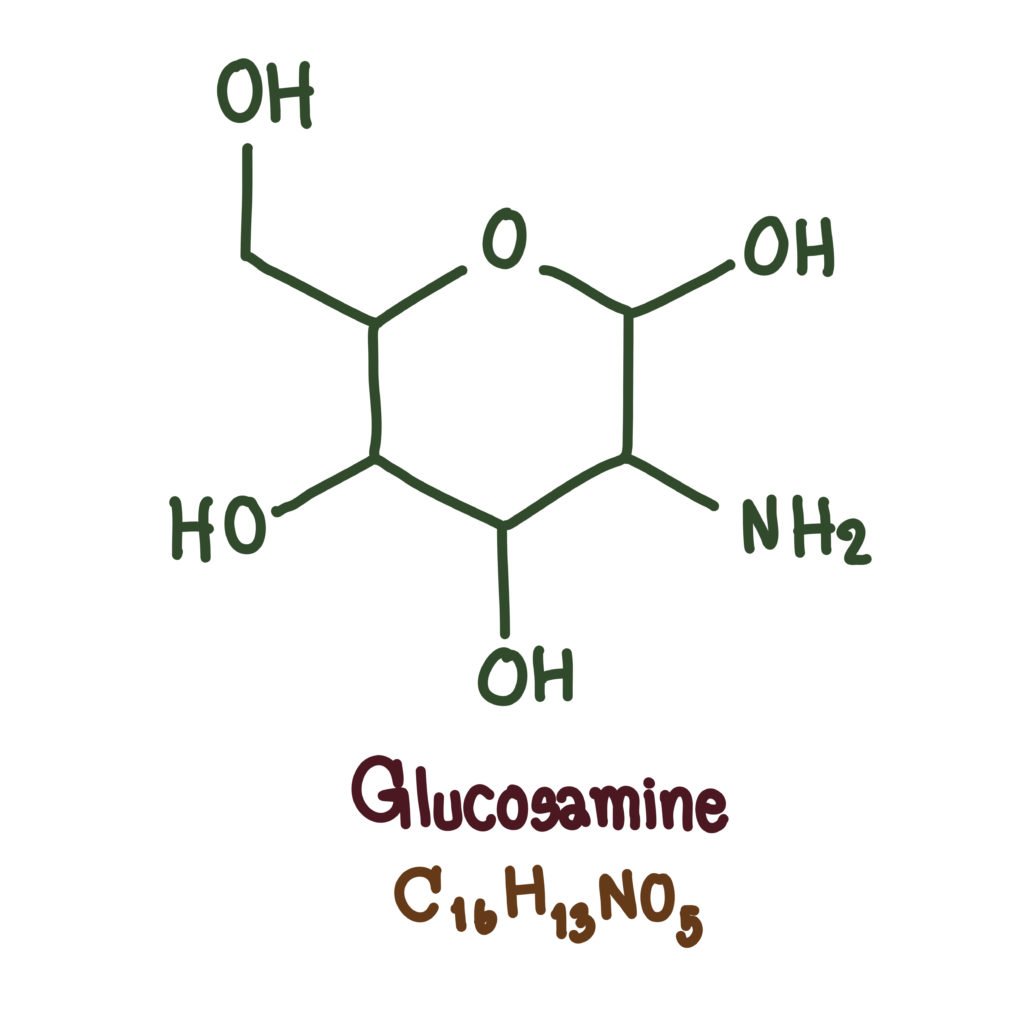Last modified on March 24th, 2020 at 12:01 pm
What Is Glucosamine For Dogs Used For?
Dogs are very active; they love to play a lot and run a lot. When they meet you after your long hard day at work, they’ll typically rush to you and run to you.
All that excitement coursing through their bodies will typically have an effect as they age. Joint pain and osteoarthritis are common problems in dogs, and you need a good medication to combat it. The good news is, there is an article where you can read more about the things you can do financially when facing pet health problems like this.
Glucosamine for dogs has proven efficacy when it comes to a dog’s bone-related problem. Glucosamine is a naturally occurring compound that can help with the joints and ease the pain that comes with osteoarthritis in dogs.
Thus, give your dog the necessary pain relief and give them foods infused with glucosamine and watch them recover and get their excitement back since they’ve regained their health and well-being.
What is Glucosamine?
Glucosamine is a natural cartilage found in a dog’s body. It’s a popular over-the-counter remedy, but it also occurs naturally in the bodies of dogs. Moreover, glucosamine is a sugar that promotes the formation of a substance called glycosaminoglycan. Cartilage depends on this substance, and it’s also the building block for the growth and repair of bone and cartilage.
Further, glucosamine helps support the function of joints in dogs as well as other animals, such as horses and cats. When your dog’s age, glucosamine becomes particularly important in preserving bone health.
Here are just some of the ways glucosamine is beneficial for your dogs:
1. Pain relief
Many dog owners administer glucosamine to their dogs because it’s very effective in alleviating pain. There are other medications and over-the-counter drugs, such as NSAIDS, that can help with pain relief, but these are not guaranteed to be safe. Glucosamine is a great alternative and may just be what you’re looking for.
Glucosamine helps alleviate the pain in these areas as well as other joints that are affected by the disease. Aside from dogs, humans also depend on glucosamine for their pain relief.
2. Arthritis and Osteoarthritis
Arthritis and osteoarthritis occur when there’s wear and tear in the joints’ cartilage. This normally happens with age, and it typically happens with older dogs as well.
Arthritis in dogs happens in their hip joints. Glucosamine doesn’t just offer pain relief, but it also gives dogs the chance to heal, reconstruct, and maintain the cartilage. Also, arthritis and osteoarthritis can be reverted back with the use of glucosamine.
Glucosamine is effective with MSM supplements in alleviating the symptoms of arthritis and osteoarthritis in dogs. Typically, if there’s a good reaction to the medication, they’ll be able to regain their performance and well-being. There will also be renewed agility in the dog. Even if you stop treatment, the effect of the medication will typically last for up to 3 months.
Thus, glucosamine prevents arthritis and helps maintain cartilage health.
3. Joint Repair
The joints are an important part of the body because it helps with mobility. It’s especially important for dogs who are very active. Glucosamine is very effective in helping maintain and repair joints. Liquid glucosamine and even glucosamine medication can alleviate injuries in dogs due to performance shows, sports, and other play.
Glucosamine is also good for temporomandibular joint problems (TMJ), which normally happens in dogs.
Essentially, glucosamine helps in maintaining the cartilage because it’s a building block. These supplements work because it’s an anti-inflammatory as well. Further, glucosamine works as a lubricator, and it’s an effective shock absorber when there’s stress on the joints. This can help protect the bones underneath.
4. Keeps Dogs In Peak Condition
Performance dogs need to have their joints and bones in peak condition. They’re tasked to do a variety of jobs. Some dogs, for example, are used in hunting, while some dogs are exhibited in performance shows.
These dogs should be agile when they walk and run. They should also have good posture and be able to walk and run confidently. For dogs that are used in sports, this is especially important.
A daily dose of glucosamine can help build their bone health so they can be in optimal performance.
5. Eliminate The Need For NSAIDs
NSAIDs (Nonsteroidal anti-inflammatory drugs) are a class of drugs that help eliminate pain. They also help decrease inflammation and blood clots.
NSAIDs are readily available over the counter, and can also be used to ease the pain in dogs that are caused by joint pain. However, NSAIDS has very grave side effects, especially after long term use. There’s an increased risk of gastrointestinal ulcers, bleeding, heart attack, and kidney disease.
Glucosamine is a great alternative to NSAIDs because the side effects of glucosamine are not that serious and are more manageable. Glucosamine will not typically result in the destruction of internal organs the way NSAIDS will.
Giving Your Dog The Right Dosage of Glucosamine
To get the best effects, it’s important to give your dog the correct dose of glucosamine. If you see that they’re suffering from joint pain or arthritis pain, you should administer glucosamine to your dog immediately.
You should also take note that too much glucosamine may have adverse effects on your dog. However, administering too little of it may not yield positive effects. The dosage that you’ll give your dog will depend on their body weight and size.
You need to administer 20 mg per pound of your dog’s bodyweight. Larger dogs may need extra mg, while you may need to adjust the amount for smaller dogs.
Side Effect of Glucosamine on Dogs
Here are some common side effects of glucosamine:
- Allergies: There are some instances where allergies are found to occur with a pet who takes in glucosamine. Typically, pets who are allergic to glucosamine are also allergic to shellfish.
- Fatigue: Initially, your dog will feel fatigued when they’re getting glucosamine for the first time. This fatigue will pass, but it’ll certainly happen in the initial phase of glucosamine treatment.
- Insomnia: Your dog may have difficulty sleeping during the first instances of taking in glucosamine. They may be unable to take naps or may stay up awake all night.
- Thirst: Your dog may seem to be overly thirsty after ingesting glucosamine. This is usually indicative that they’ve taken a high dose of glucosamine.
Final Thoughts
You want your dog to be in the best health possible. Dogs should be able to do their activities, such as running and playing, with ease. Also, they shouldn’t be encumbered by joint pain or arthritis.
When dogs grow older, their health deteriorates. In this case, they may need a dose of glucosamine to regain their well-being and health.
Give the best health for your dogs and give them glucosamine, which is effective and generally safe, and bring back the joy in their lives.





